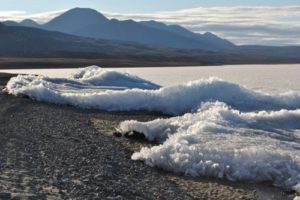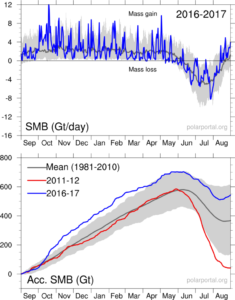by Amanda Morris, June 4, 2018 inNorthwesternUniversity
A tiny clue found in ancient sediment has unlocked big secrets about Greenland’s past and future climate.
Just beyond the northwest edge of the vast Greenland Ice Sheet, Northwestern University researchers have discovered lake mud that beat tough odds by surviving the last ice age. The mud, and remains of common flies nestled within it, record two interglacial periods in northwest Greenland. Although researchers have long known these two periods — the early Holocene and Last Interglacial — experienced warming in the Arctic due to changes in the Earth’s orbit, the mix of fly species preserved from these times shows that Greenland was even warmer than previously thought.


